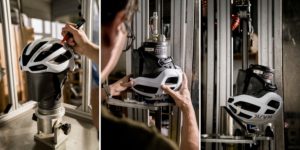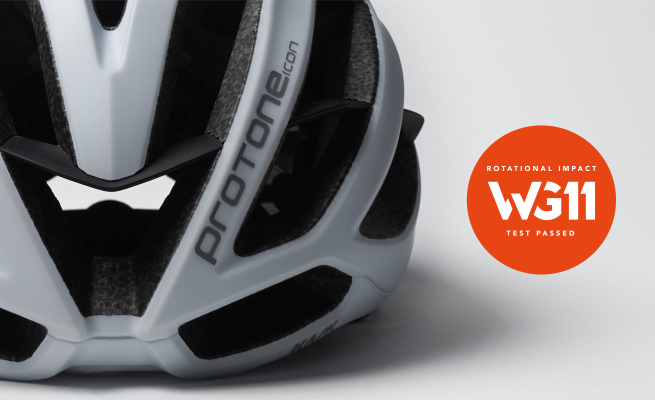Exploring rotational impact testing with KASK
In recent years, numerous scientific studies have proven the importance of anti-rotational impact protection, with Kask developing its own Rotational Impact WG11 Test in order to address that need.
Inspired by the motorcycle helmets standard set by United Nations’ ECE 22.06, which requires a rotational impact test, the successful application of Kask Rotational Impact WG11 Test results in the brands helmets being among the safest cycle helmets on the market.
As there are no standard tests in the cycling industry that take rotational impacts into account, Kask introduced its own test in 2019 – an objective method, based on scientific sources, for measuring the performance of its helmets against rotational impacts – to address that need.
- Based on science and realistic impact scenarios, Kask test all their helmets for rotational impact reduction at a minimum speed of 6 m/s.
- Critically, the test has a “pass-fail” criterion is based on the BrIC value – an established medical science based algorithm – that defines the level of brain injury.
- This value must be lower than 0,68. So far all KASK’s helmets have achieved a value never above 0.39, proving exceptional protection against rotational impacts.
The results
In the pursuit of ever-improving safety, Kask conducts all its tests in an independent, certified laboratory using EN960 series headforms which have a 0.3 nominal coefficient of friction.
Every helmet receives a BrIC (Brain Injury Criteria) value which is determined by their performances against both linear and rotational impacts. BrIC is an algorithm that defines the level of brain injury. To simplify; the lower the BrIC value, the lower the risk of concussion.
The BrIC value should never exceed 0.68.
Diego Zambon, KASK General Manager, comments: “Since we introduced our Kask Rotational Impact WG11 Test in 2019 it has revolutionized the way we assess helmet safety.”
“We have learnt a vast amount from our research in this area and our findings will continue to play a pivotal role in how we integrate new materials and technologies into our full range of helmets.”
How to critically interrogate the data (and the testing protocol)?
Sufficed to say that’s no easy ask. Road.CC did really try, with a seriously in-depth exploration of every aspect of this topic, including commercial biases and their potential influence.

Conclusion
What is clear is that extensive, peer reviewed, medical research identifies rotational forces as significant contributors to concussive effect.
That testing helmets for reduction in this has more than 1 method, and that there are now a number of options for cycling helmets fitted with technology developed to minimise negative effects of rotation / non linear impact, can only be viewed as positive progress in reducing negative effects of a fall for a rider wearing such a helmet.
In the UK Kask helmets are distributed by VeloBrands.



